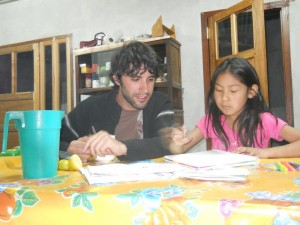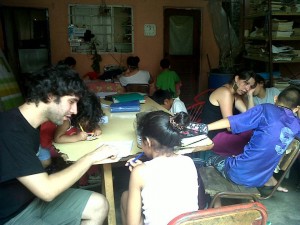Facing social problems with action (Part 1)
As I’ve described before, people get involved in different ways to take action and face emergency situations, and education in the most humble communities in Argentina is definitely one such situation.
When I think of civil action, two people come to my mind: my coworker, Juan; and my life long friend, Victoria. I’ll describe each in different entries. They couldn’t be more different from one another. And yet, their concerns lead them both to advocate for more social inclusion. Juan is part of La Cámpora, a political group that represents the party in charge of the government, whose leader is President Kirchner. It’s not a political party; it’s a civic group that takes part in political activism. My coworker told me one of the things their group does is give support to schools located in shantytowns. They usually do this during Saturday mornings in a dinning hall in Villa 20, in the neighborhood of Lugano.
Juan has recently finished a BA in Political Science, and it was in college that he first got involved in political activism. I’m very critical about this myself, so we discuss our ideas a lot.
“I think militancy is the combination of a feeling and a belief that you can actually change reality through social action,” he told me.
Juan believes that behind each person, there’s always a social structure that enables their development, and that through political action you can expand these structural circumstances to create a society in which more people have civil rights and real possibilities to improve themselves.
In Juan’s own words: “In Villa 20 we make contact with kids from humble families, whose parents (for different reasons) don’t have the necessary resources to help their offspring with their performance in school. We give them breakfast, as well, so that they can do better in class. I think this is a very concrete example of how reality can be changed.”





